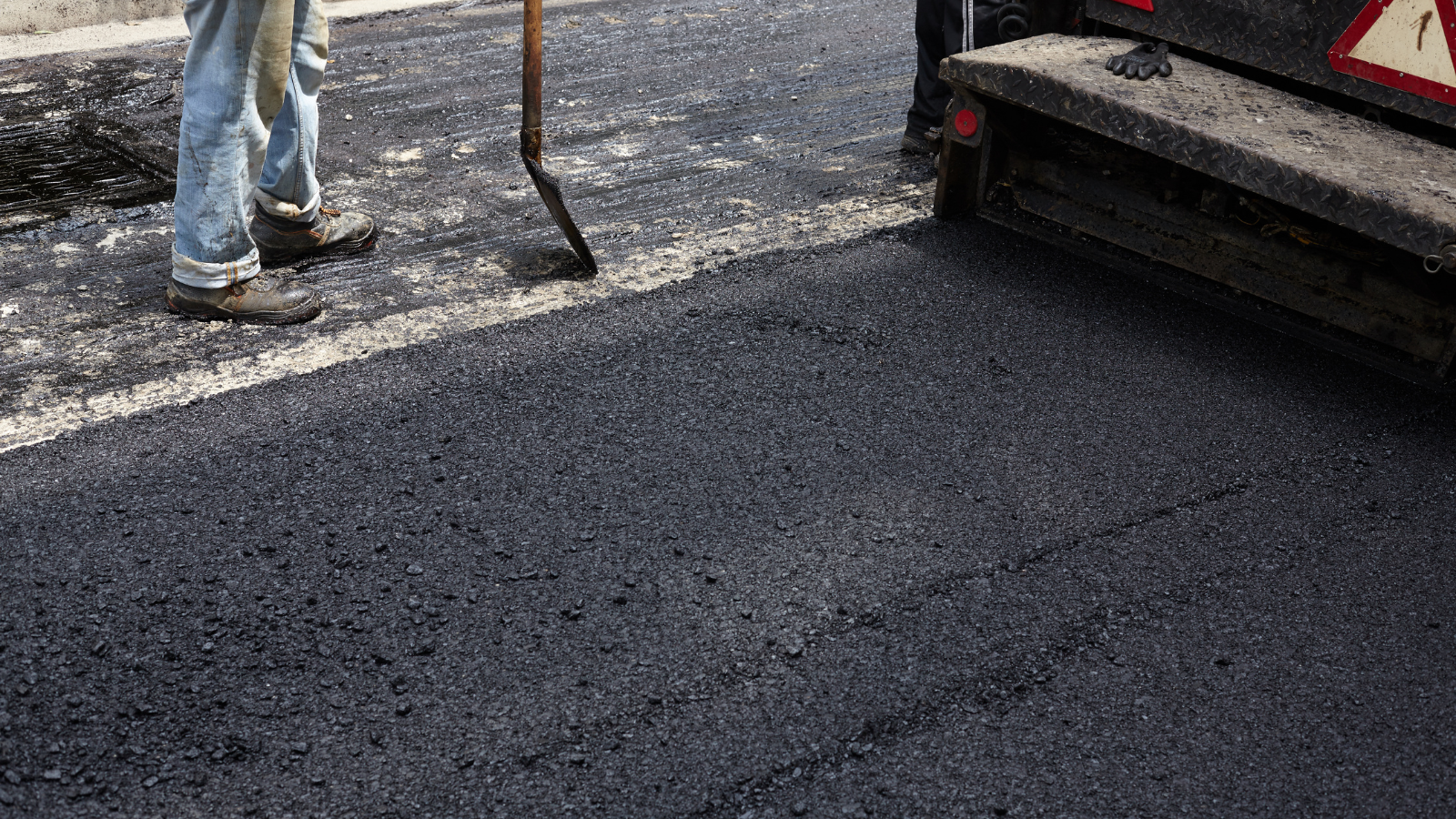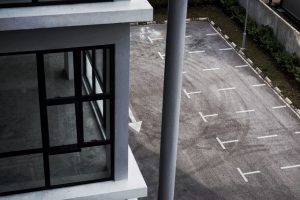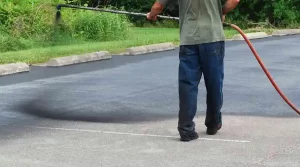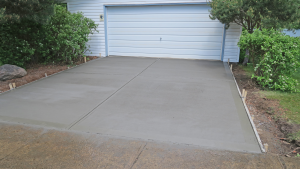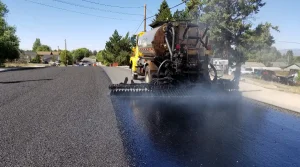When maintaining roads, driveways, and parking lots, property owners and managers often have to decide: Should they spend money on regular maintenance to prevent problems or wait until problems happen and then fix them? This choice affects how much money they spend and how long the pavement will last. In this article, we will examine why maintaining pavement is important, explore different ways to repair it, and discuss which method is best for the future.
Jersey City residents, are you in need of expert paving services? We’ve got you covered!
Our skilled professionals deliver top-quality results at affordable prices tailored to your budget. Don’t settle for less with inexperienced contractors—your property deserves top-notch care. Contact Jersey City Paving now at (201) 977-4882!
What is Pavement Preventive Maintenance?
Pavement preventive maintenance involves taking proactive steps to extend the life of the pavement and avoid costly repairs. This approach emphasizes the early detection and treatment of minor issues before they escalate into major problems. Preventive maintenance is a routine, ongoing activity designed to preserve and protect the pavement surface, ultimately avoiding the need for more costly and involved repairs in the future.
Common preventive maintenance practices include:
Sealcoating: A protective layer is applied to the pavement surface to shield it from harmful UV rays, water infiltration, oil spills, and other environmental factors that can accelerate deterioration.
Crack Sealing: Filling pavement cracks to prevent water from seeping in and causing further damage, such as potholes and structural weakening.
Pothole Patching: Repairing small potholes promptly to prevent them from expanding and leading to more significant issues.
Surface Treatments: Applying thin layers of asphalt or other materials to rejuvenate the pavement surface, improve skid resistance, and enhance overall performance.
What are the Methods of Pavement Repair?
While preventive maintenance aims to avoid damage, pavement repair becomes necessary when problems have already developed. Depending on the severity and type of damage, different repair methods can be employed to restore the pavement to its optimal condition.
Common methods of pavement repair include:
Pothole Repair: Filling potholes with hot or cold asphalt mix to restore a smooth and safe driving surface.
Resurfacing: Applying a new layer of asphalt over the existing pavement to address surface-level issues, such as cracking or minor depressions, and provide a fresh, smooth finish.
Full-Depth Repair: Removing and replacing the entire pavement layer when damage extends deeper into the structure, addressing issues such as base failures and extensive cracking.
Milling and Overlay: removing and replacing the top layer of asphalt with a fresh one which helps to correct surface damage and improve ride quality.
Patch Repair: Cutting out damaged sections of pavement and replacing them with new material, effectively addressing localized issues.
Preparing Pavements for Preventive Maintenance
Before entering into a preventive maintenance contract, It is necessary to assess the present state of the pavement and address any existing issues. This preparatory step ensures that preventive measures are effective and that the pavement has a stable foundation for ongoing maintenance.
Key steps include:
Inspection: Conducting a thorough inspection to identify existing cracks, potholes, and other forms of damage.
Initial Repairs: Addressing significant issues, such as deep cracks or large potholes, to prevent further deterioration and prepare the pavement for preventive maintenance.
Surface Cleaning: Removing debris, dirt, and vegetation from the pavement surface to ensure that preventive treatments adhere properly and work effectively.
Which Approach is More Effective?
When choosing between preventive maintenance and repair, several factors must be considered, including cost, pavement condition, and long-term goals. Each strategy offers unique advantages and drawbacks, and The choice frequently depends on the particulars of the property.
Pros of Preventive Maintenance:
Cost-Efficiency: Preventive maintenance is generally more cost-effective in the long run, as it addresses issues early on, preventing expensive repairs.
Extended Pavement Life: Regular maintenance can significantly prolong the pavement’s life, decreasing the requirement for frequent replacements and major repairs.
Improved Safety: Well-maintained pavements are safer for vehicles and pedestrians, lowering the possibility of mishaps brought on by potholes, cracks, and uneven surfaces.
Reduced Disruption: Preventive maintenance typically involves less disruption to traffic and daily operations compared to major repairs.
Cons of Preventive Maintenance:
Initial Costs: Although cost-effective in the long run, preventive maintenance requires an initial investment, which may be challenging for some property owners.
Ongoing Commitment: Preventive maintenance requires regular inspections and treatments, necessitating time and resources.
Pros of Pavement Repair:
Immediate Solutions: Repairing damage as it occurs provides quick solutions to visible problems, restoring the pavement’s appearance and functionality.
Targeted Approach: Repairs can be targeted to specific areas of damage, minimizing the need for widespread treatments and reducing costs.
Necessary for Severe Damage: In cases where the pavement is severely damaged, repairs are the only viable option to restore its integrity and safety.
Cons of Pavement Repair:
Higher Long-Term Costs: Waiting for problems to arise can lead to more extensive damage, resulting in higher repair costs over time.
Shorter Lifespan: Repairs alone may not be enough to extend the overall lifespan of the pavement, leading to more frequent interventions.
Increased Disruption: Major repairs can cause significant disruption to traffic and daily operations, especially if large areas need to be closed off for extended periods.
Insights into Cost-Efficiency, Performance, and Sustainability
When considering cost-efficiency, performance, and sustainability, preventive maintenance emerges as the more effective approach. Regular upkeep is an investment that property owners may drastically cut down on the frequency and expense of repairs, enhance the overall performance of their pavements, and contribute to a more sustainable reduces the need for regular replacements, therefore protecting the environment.
Conclusion
Choosing between pavement preventive maintenance and repair is not always straightforward, but understanding the benefits and drawbacks of each approach can help property owners make informed decisions. Preventive maintenance offers long-term savings, extends the life of pavements, and improves safety, making it a highly effective strategy for maintaining pavement in optimal condition. However, when significant damage has occurred, repairs become necessary to restore functionality. By combining preventive maintenance with timely property owners may guarantee that their pavements continue to be secure, useful, and cost-effective for many years to come.

